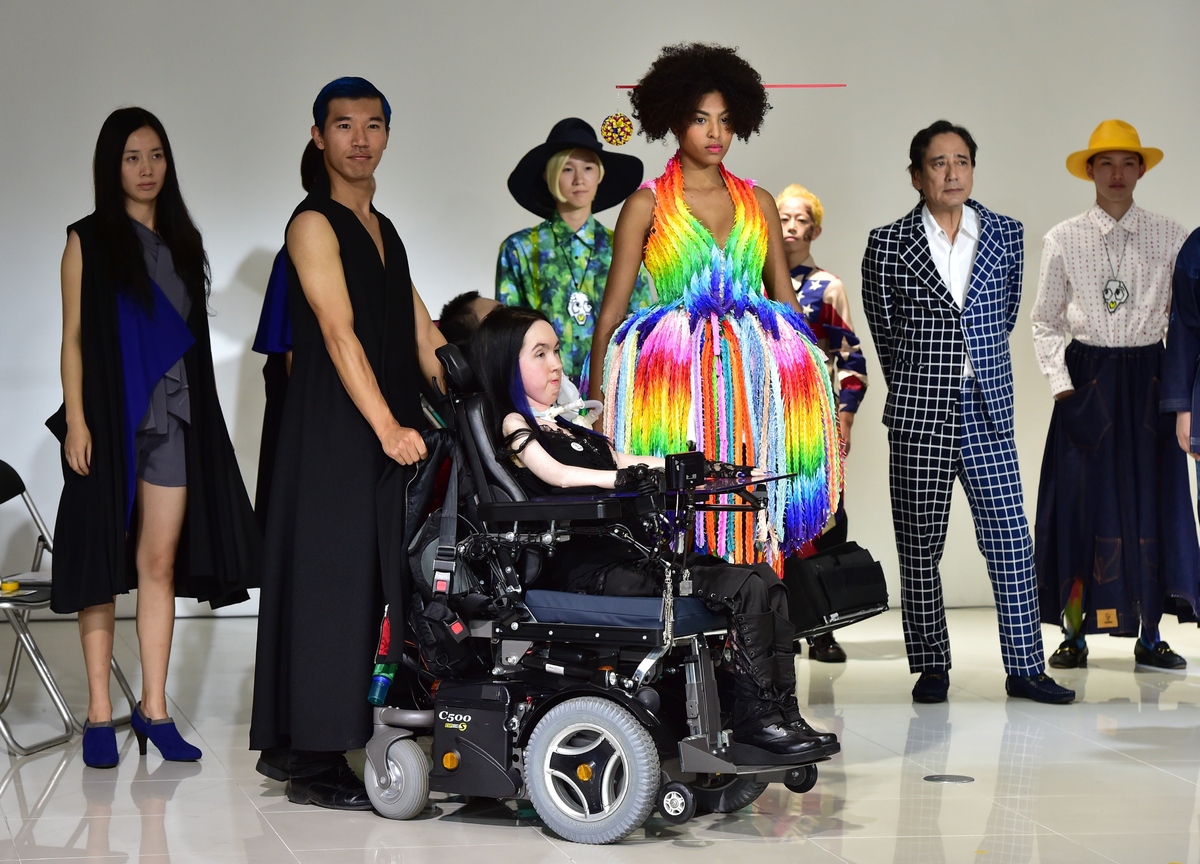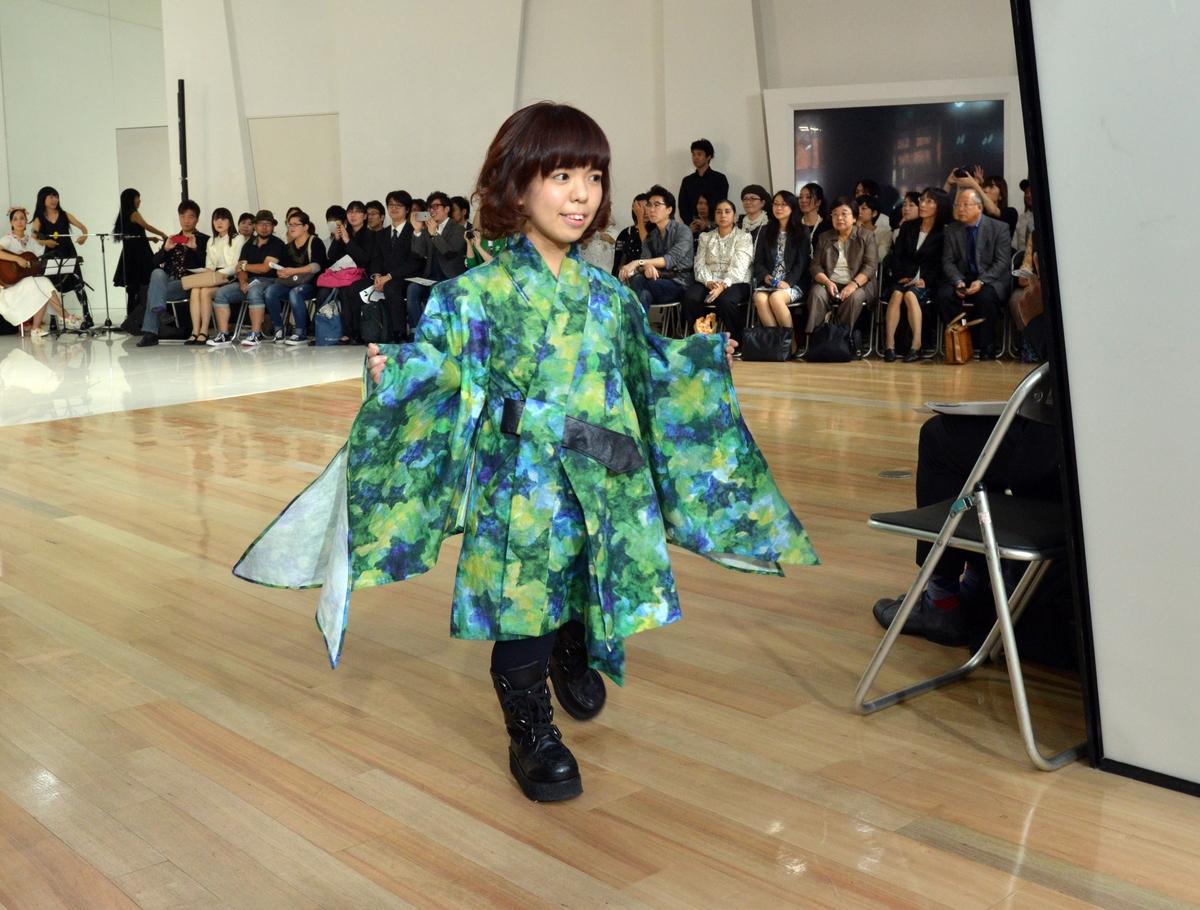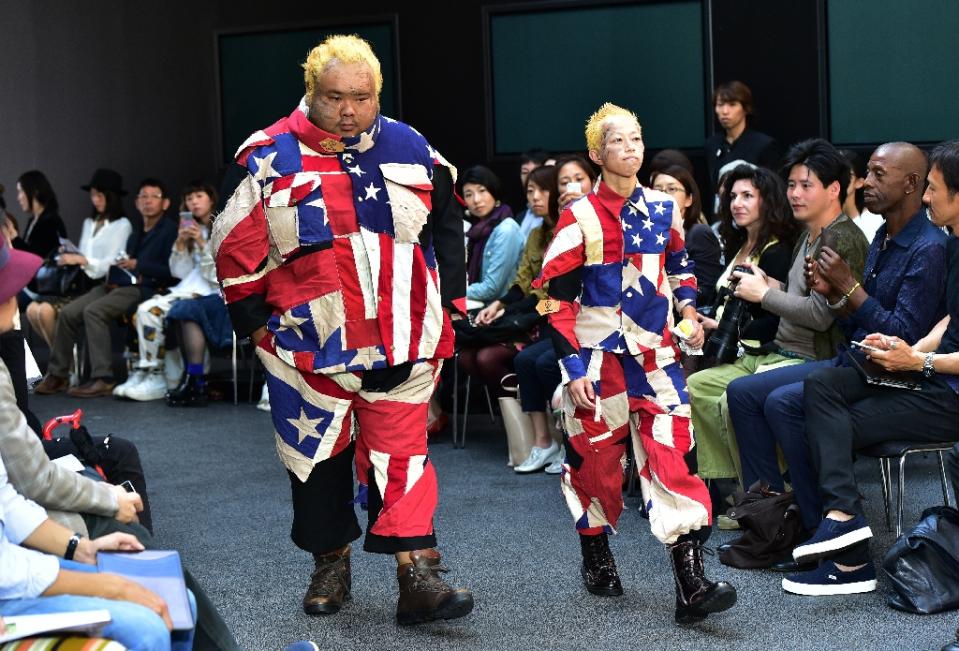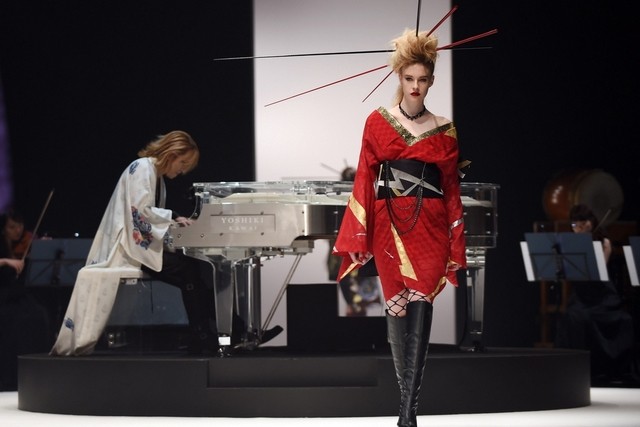Tokyo fashion week drew to a close this weekend, showcasing the latest creations of some of the country’s greatest designers.
On Tuesday, Outspoken designer Takafumi Tsuruta gave his Tenbo collection the controversial political theme of 1945, the year in which the atomic bomb was dropped on Hiroshima and Nagasaki.

“It is a tough subject, but I thought I could express it through fashion,” Says Tsuruta.

But behind this eyebrow-raising theme was a particularly commendable goal- a goal to create clothes that better reflect the diversity of society rather than the typical niche of the fashion market.
Tenbo’s brand objective is to create clothes that are inclusive of “all people of the world, regardless of gender, age, nationality or disability.”
His SS16 collection was showcased on people from all walks of life. From transgender models to singers with muscular dystrophy, Tsuruta aims to break the long held stigma that models have to be a certain shape or size, aiming to accommodate his fashion for the people that fashion often forgets.
According to Tsuruta: “Whether you’re in a wheelchair, have only one arm, or simply going to work on a rainy day, fashion should encompass all walks of life.”

“It is just natural for me that there are models with different personalities. You may think such a world is like a utopia, but it is the real world we live in. I want to showcase it through fashion.” Says Tsuruta.
The last Saturday of Tokyo Fashion Week saw Japanese rock star and designer Yoshiki add a unique rock element to the traditional Japanese kimono.

The brand is Yokishimo, and combines the designers name and kimono to encapsulate what the brand is all about- the reinvention and modernisation of Japanese traditional wear.
In his fashion week debut, heavy-metal rocker Yoshiki combined body-hugging kimono’s slashed to miniskirt-length with stilettos, fishnet stockings and leather collars with a black, red and white colour scheme to capture the essence of rock n roll.
“I want to spread the message that kimono can be worn every day, it’s something people can wear like they wear modern clothes, not something that makes them feel like they are in a costume.” Says influential Japanese kimono designer Jotaro Saito.

In a vast leap from the heavy silk featured with floral patterns that are usually used to make the traditional attire, Yokishimo is turning to alternative fabrics such as jersey, denim and wool to reinvent and revitalise the kimono. Hoping to bring inspiration to the people of Japan so that traditional attire doesn’t just become a fashion of the past.






